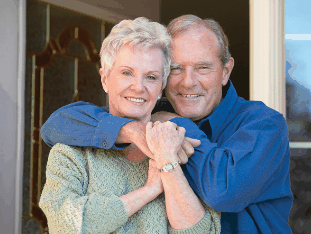
Yesterday, the Financial Standard Online published an interesting article warning that the baby boomer generation in Australia is unprepared financially for retirement, with many seeking to draw-down on their property holdings:
A whopping 86% of Australia’s 5.5 million baby boomers are, in varying degrees, financially under-prepared for retirement, according to research release by industry super heavyweight REST Industry Super today.
Dubbed The Journey Begins, the REST-commissioned white paper – based on the attitudes of 1,200 Australians approaching retirement – reveals a massive disconnect between what baby boomers expect their retirement to be like, and what reality has in store…
The survey also reveals a growing reliance on the family home to help close the retirement savings gap, with almost half planning to move house once retired, and more than a quarter expecting to downsize.
Equally surprising, Hill told the Financial Standard is the proportion of unretired over 50s – over a third – identified in the survey as now having (intergenerational) financial dependents.
“So they’re not only funding their own retirement, they’re also entering retirement with debt and/or funding dependents later in life, be it adult kids or elderly parents, ” said Hill…
The white paper reveals that only 14 percent of baby boomers feel financially prepared for retirement, 51 percent say they are somewhat prepared financially, while a further 35 percent described themselves’ as completely unprepared…
As noted previously (for example, here, here, here and here), the retirement of the baby boomer generation – defined by the Australian Bureau of Statistics (ABS) as those born between 1946 and 1965 and comprising around 25% of Australia’s population – is expected to have a significant bearing on the performance of the Australian economy and asset markets, particularly housing, over the coming decades.
Over the past 40 years, Australia enjoyed a demographic dividend from the large baby boomer cohort entering the workforce. This process generated a population structure optimal for economic growth, whereby the largest segments of Australia’s population were neither young nor old, but in the middle (i.e. working age).
This demographic dividend is illustrated in the next chart, which plots the ratio of the working age population- defined as those aged between 20 and 65 years old – to the non-working age population – defined as those aged under 20 years old and over 65 years old.
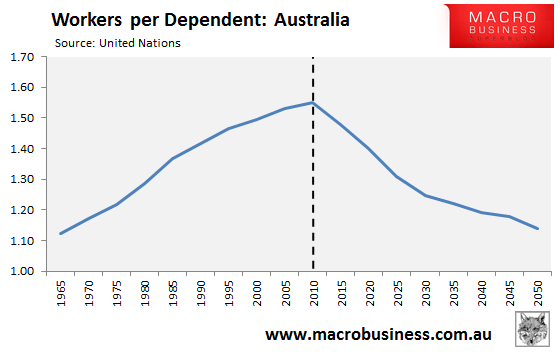
Between 1965 and 2010, the proportion of the population in working age grew steadily as the baby boomers entered the workforce. This process drove-up the ratio of workers per dependent (both children and the elderly), which hit a peak of 1.55 in 2010, up from only 1.12 in 1965.
However, in 2011, the oldest members of the baby boomer generation turned 65 years of age, marking the traditional end of their working years. According to projections from the United Nations Population Division, the ratio of workers per dependent is forecast to fall sharply over the next 50 years as the baby boomers enter retirement and Australia’s population continues to age.
The gradual retirement of the baby boomer generation is also likely to reduce the proportion of the population in paid employment, which should, other things equal, crimp income growth, the demand for assets, and the ability of the economy to maintain current high levels of debt. Already, the total employment-to-population ratio has been trending down since 2007, partly in response to population ageing (see next chart).
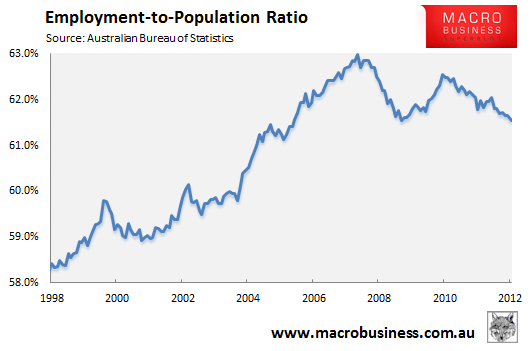
Arguably, one of the major areas that could be affected by the retirement of the baby boomers is the housing market, given the baby boomers own roughly half of the nation’s housing stock, according to the ABS (see next chart). As alluded to in the above survey, many baby boomers are likely to seek to fund their retirements by selling-down their housing assets, such as by downsizing or liquidating their investment property portfolios.
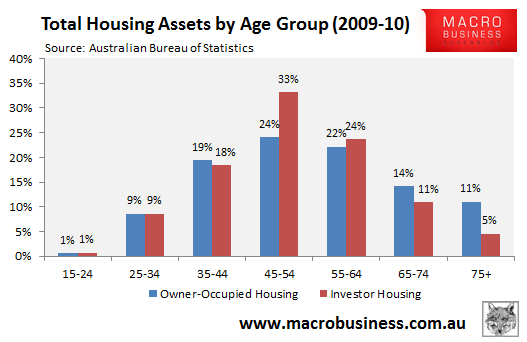
As noted previously, the contention that the baby boomers’ retirement will create headwinds for the housing market is supported by a detailed working paper released in 2010 by the Bank for International Settlements (BIS), which found that the baby boomers increased real house prices in Australia by around 30% over the 40 years to 2010, compared with what would have occurred had Australia’s age structure remained neutral. However, the BIS also estimated that the baby boomer’s retirement would reduce Australia’s real house price growth by around 30% over the 40 years to 2050, compared with neutral demographics, as they liquidate their property holdings (see next chart).
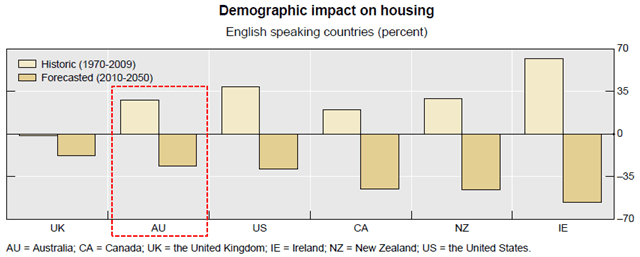
Like the frog that gets boiled slowly, demographic shifts are inherently slow moving, so their impacts are gradual and tend to go unnoticed for extended periods of time. Nevertheless, these longer-term dynamics are significant and are likely to significantly alter the growth trajectory of asset valuations and economies in the decades to come.
The full REST survey is available here.

